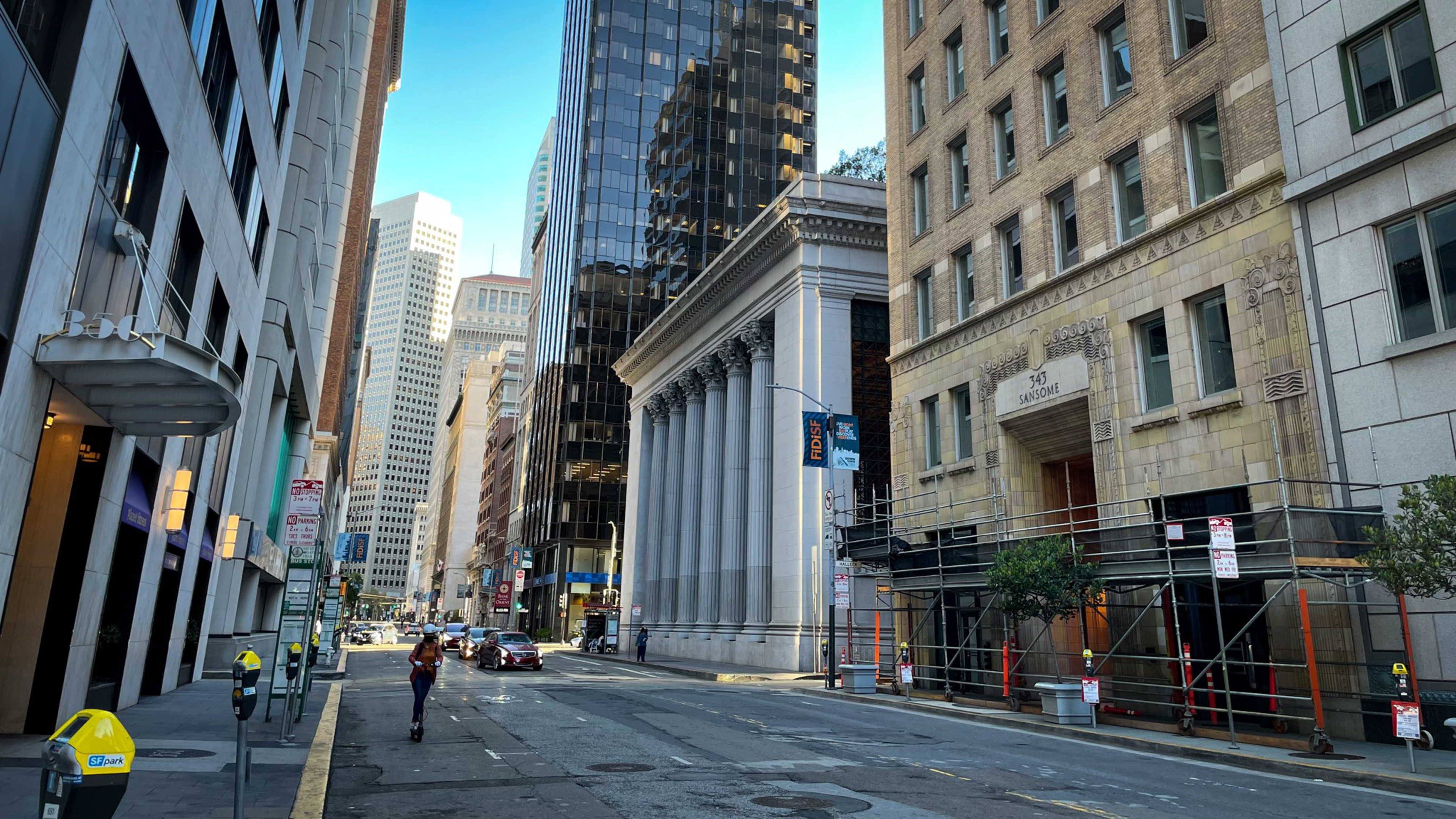The numbers are in: San Francisco’s office market is way down. Again.
Office vacancy rates in San Francisco rose past 27% last quarter, with a growing amount of square footage staying empty, according to early numbers from CBRE. The news has economists wondering just how long the office market decline will last—and what San Francisco’s downtown will look like when, or if, it comes back.
“We’re not going back to 2019 in the city of San Francisco,” said Jeff Bellisario, executive director for the Bay Area Council’s Economic Institute.
San Francisco’s office market closed the year deep in the red: During 2022, 5 million more square feet of office space became vacant than became occupied, according to data from Kidder Mathews and early numbers from CBRE. The latest numbers reflect a long-term trend of rising office vacancies in the city.
“The bulk of the vacancy increase is already on us,” CBRE Tech Insights Center’s Executive Director Colin Yasukochi said. “We’re at a historic high right now.”
After two years of pandemic upheaval—when many workers were laid off and others sent home to work remotely—big employers like Salesforce are pointing to a possible recession by making layoffs and dumping office space.
Tech giants like Snap (opens in new tab), Airbnb (opens in new tab) and Slack (opens in new tab) also shrank their footprints last year, putting office space back on the market early or looking to sublease. According to a spokesperson for Meta, which recently dumped its East Bay office (opens in new tab), the company is still evaluating whether it will keep its San Francisco headquarters.
These and other exits have boosted office vacancies—and the worst may be yet to come as chatter of an economic downturn grows.
Companies are announcing layoffs left and right, and it’s likely not the end of the corporate cutbacks.
“There’s probably still more vacancy to come in the first quarter, maybe through the second quarter of 2023,” Yasukochi said. “The impacts of a recession have shown up before the actual recession.”
Because of long-term leases, the tail of the office market is particularly long and could wind up hitting San Francisco harder than some of its neighbors in the region.
That’s because Silicon Valley, where many of the large companies that typically occupy downtown real estate are actually headquartered, is right next door. Bellisario predicts San Francisco may have a hard time convincing those companies to keep paying the city’s elevated taxes and asking commuters to come into the city.
The office slump has potentially disastrous consequences for the city’s multibillion-dollar budget. Apart from lost business taxes, falling commercial real estate values could damage property taxes—San Francisco’s largest source of tax revenue—over the next few years.
“There’s no quick recovery coming,” Bellisario said. “If anything, we’re looking at a bit more pain.”
There’s also the fact that, because office leases tend to be long and expensive, recent layoffs and elevated vacancies haven’t yet driven down leasing prices. As a result, Bellisario said, office prices appear frozen.
“The office market is going to have to have some kind of reset at some point,” Bellisario said. “That reset has yet to come, and I’m not sure when it happens or how it happens.”
To Bellisario, San Francisco needs to take a hard look at diversifying its downtown to include research and development space, housing or tourist-centered uses in the future. But knowing San Francisco’s boom and bust cycle, the future is not all doom and gloom.
“It seems pretty dire right now in terms of the condition of the office market, but we’ve been here before,” Yasukochi said. “The tech industry will recover.”
Correction: This version clarifies net absorption in the city’s office market during 2022.
